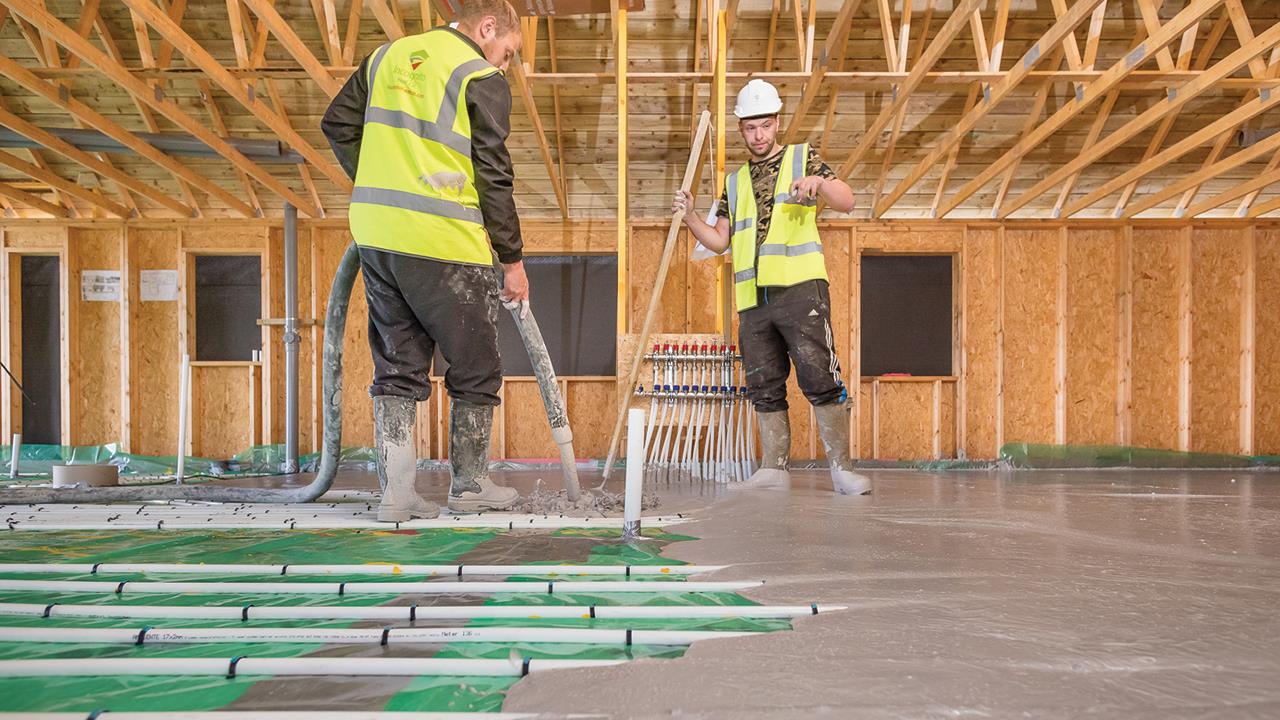

Sturge Mazzocchi, Internal Account Manager at Ambiente, explains why there’s nothing to fear from the upcoming Part L changes when it comes to sequencing underfloor heating installations.
With all the rumoured changes for the Part L Building Regulations, there’s plenty of talk in the industry about how to go about specifying low temperature systems, but specification is only half the story. Understanding there are also options around when underfloor heating (UFH), for example, can be sequenced in your build programme is another challenge to get your head around.
We all suffer a little from a fear of the unknown, however we often discover that change isn’t as bad as we thought it was going to be. The adoption of Part L changes is no exception for many, having to embrace new or unfamiliar products, understanding new specification requirements and how your choice of low temperature system might impact your established supply chain and build sequence. The good news though is underfloor heating installation can be easily tailored to suit you.
First of all, there is no right or wrong way to sequence UFH, there are just different options to choose from. Your reasons for wanting to consider these might include – a preference for the way you want to work, any current contractual obligations, or supply and logistics limitations or requirements. The end goal is always the same though, to align your UFH system so its specification smoothly integrates with your build.
So, when can a UFH system be sequenced? Typically there are two stages – at the beginning of the development (the oversite stage), or after the walls and house structures are in place. Both ways are acceptable and widely used. There are some factors to bear in mind though, to help you determine which option might be best for you:
When you’ve decided on the most appropriate sequencing option, the installation process for both is then as follows:
Depending on which option you’ve chosen, there are a few more considerations to bear in mind. For the oversite stage at the beginning of the development, the manifold location should be marked on the floor according to the agreed design, the manifold back board should be mounted for pressure testing, and manifold sheet covers should be used to provide protection during construction works.
If UFH is being installed after the walls and housing structure have been built, then you will have a bit more flexibility in how you can adapt to any potential changes.
However, it’s still worth future-proofing the system in case there are any design amends after the pipes have been laid in screed. The manifold will be wall-mounted for this sequencing option and would be pressure tested at its designated location, as identified in your designs. And, although the housing structure will now be in place, we still recommend using manifold sheet covers to protect the system before it’s properly boxed in.
The transition to Part L will be a challenge for the industry and enormity of the task shouldn’t be underestimated but, although we may be biased as an UFH provider, this is a positive change. Low temperature systems are better for the environment and, in the case of an UFH system, better for the health and safety of end-users.
The guidance I’ve provided in this article is just a sample of the help and support we can offer, along with many of our colleagues across the wider UFH and heat pump industry. We’re in this together, so let’s embrace the changes and move forward.
If you'd like to keep up-to-date with the latest developments in the heating and plumbing industry, why not subscribe to our weekly newsletters? Just click the button below and you can ensure all the latest industry news and new product information lands in your inbox every week.